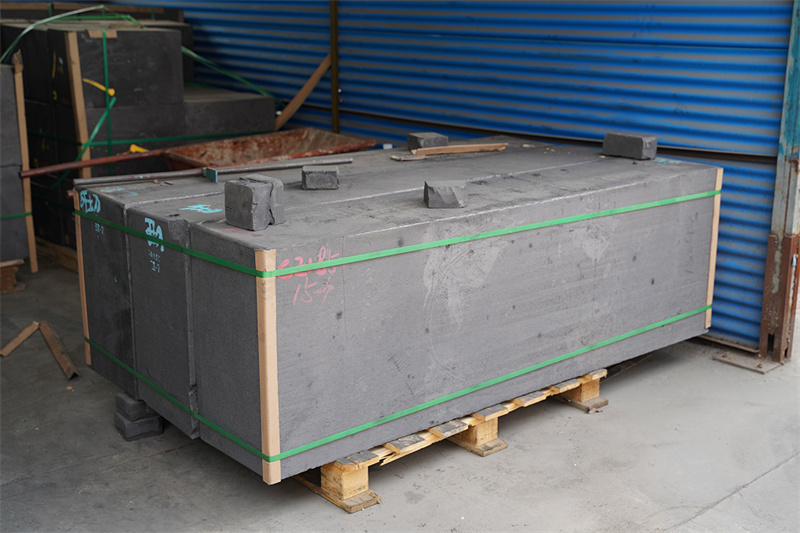Graphite, a remarkable form of carbon, has proven to be an indispensable material in various high-temperature applications due to its exceptional properties. With its ability to withstand extreme heat, excellent thermal and electrical conductivity, and high chemical stability, graphite has become a go-to choice for industries pushing the boundaries of temperature limits. In this article, we will explore some examples of how graphite is utilized in high-temperature applications, showcasing its versatility and importance in modern technology.
1. High-Temperature Furnaces
One of the most prominent uses of graphite is in the construction of high-temperature furnaces. These furnaces, capable of reaching temperatures exceeding 2500°C (4532°F), rely on graphite's exceptional thermal properties to create stable and efficient heating environments. Graphite hot zones, made from high-purity graphite, allow for rapid heating and cooling cycles, reducing overall process times. The thermo-mechanical properties of graphite enable furnace manufacturers to design compact and durable systems that can withstand the rigors of extreme temperature fluctuations.
2. Nuclear Reactors
Graphite plays a crucial role in nuclear reactors, where its ability to absorb fast-moving neutrons helps stabilize nuclear reactions. The high-temperature resistance and chemical stability of graphite make it an ideal material for reactor cores, where it serves as a moderator and reflector. Graphite's low thermal expansion and high thermal conductivity contribute to its excellent thermal shock resistance, ensuring the safe and efficient operation of nuclear reactors.
3. Aerospace Applications
The aerospace industry has embraced graphite for its lightweight and strong properties, particularly in the form of graphene sheets. These sheets, derived from graphite, boast an impressive strength-to-weight ratio, being 100 times stronger and 10 times lighter than steel. This remarkable combination of properties has opened up new possibilities for the development of lightweight and durable components for aircraft and spacecraft. From structural elements to thermal management systems, graphite and its derivatives are revolutionizing the aerospace sector.
4. Refractory Materials
Graphite is a key ingredient in the production of refractory materials designed to withstand extreme temperatures. Its high heat tolerance and chemical stability make it an essential additive in the manufacturing of glass, steel, and iron. Graphite-enhanced refractories line furnaces, kilns, incinerators, and reactors, providing superior thermal conductivity, reduced thermal expansion, and increased resistance to slag and corrosion. The incorporation of graphite in refractory materials significantly extends their working life and improves their performance at elevated temperatures.
5. Electrical Applications
The excellent electrical conductivity of graphite has made it a vital component in various electrical applications, particularly in the realm of high-temperature environments. Graphite electrodes, for example, are used in electric arc furnaces for the production of steel, iron, and non-ferrous metals. These electrodes can handle very high currents and are produced by molding synthetic graphite into the desired shape. Graphite's ability to withstand extreme temperatures while maintaining its electrical properties makes it an indispensable material in the electrical industry.
6. Crucibles for Melting Materials and Molds for High-Temperature Molding
Due to its incredibly high melting point, graphite is used to make crucibles for melting down materials before molding. Its resistance to extreme temperatures also makes it suitable for molds used in injection molding, blow molding, and casting processes. Graphite's unique thermal properties ensure that these critical components can withstand the rigors of high-temperature manufacturing processes.
Graphite's unique combination of properties, including its high-temperature resistance, thermal and electrical conductivity, and chemical stability, has solidified its position as a critical material in numerous high-temperature applications. From enabling the construction of advanced furnaces and nuclear reactors to revolutionizing aerospace components and enhancing refractory materials, graphite continues to push the boundaries of what is possible in extreme temperature environments. As industries strive for higher efficiency, durability, and performance, the demand for graphite-based solutions is set to soar.
Koboi Graphite specializes in providing high-quality graphite solutions for the most challenging high-temperature applications. Our team of experts works closely with clients to understand their unique requirements and develop customized graphite components that optimize performance, efficiency, and cost-effectiveness. Contact us today to learn more about how our advanced graphite products can change your high-temperature processes.

_857.jpg)

_853.jpg)
_867.jpg)
